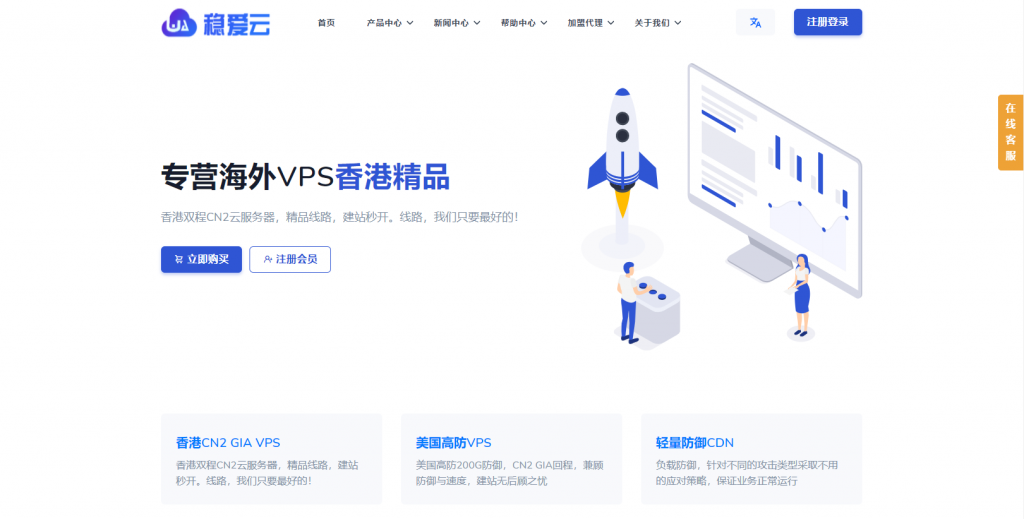teleconferencewww.mcbbs.net
www.mcbbs.net 时间:2021-03-22 阅读:()
1OriginalarticleDevelopmentofaneonataladverseeventseverityscalethroughaDelphiconsensusapproachThomasSalaets,1MarkATurner,2MaryShort,3RobertMWard,4IsamuHokuto,5RonaldLAriagno,6AgnesKlein,7SandraBeauman,8KellyWade,9MerranThomson,10EveRoberts,11JudyHarrison,12TheresaQuinn,13GerriBaer,14JonathanDavis,15,16KarelAllegaert,1,17OnbehalfoftheInternationalNeonatalConsortiumTocite:SalaetsT,TurnerMA,ShortM,etal.
ArchDisChildEpubaheadofprint:[pleaseincludeDayMonthYear].
doi:10.
1136/archdischild-2019-317399Additionalmaterialispublishedonlineonly.
Toviewpleasevisitthejournalonline(http://dx.
doi.
org/10.
1136/archdischild-2019-317399).
Fornumberedaffiliationsseeendofarticle.
CorrespondencetoDrKarelAllegaert,DepartmentofPediatrics,DivisionofNeonatology,ErasmusMCSophiaKinderziekenhuis,Rotterdam3015,Netherlands;karel.
allegaert@uz.
kuleuven.
ac.
beReceived11April2019Revised24August2019Accepted3September2019Author(s)(ortheiremployer(s))2019.
Re-usepermittedunderCCBY.
PublishedbyBMJ.
AbstractBackgroundAssessmentoftheseriousness,expectednessandcausalityarenecessaryforanyadverseevent(AE)inaclinicaltrial.
Inaddition,assessingAEseverityhelpsdeterminetheimportanceoftheAEintheclinicalsetting.
StandardisationofAEseveritycriteriacouldmakesafetyinformationmorereliableandcomparableacrosstrials.
AlthoughstandardisedAEseverityscaleshavebeendevelopedinotherresearchfields,theyarenotsuitableforuseinneonates.
ThedevelopmentofanAEseverityscaletofacilitatetheconductandinterpretationofneonatalclinicaltrialsisthereforeurgentlyneeded.
MethodsAstepwiseconsensusprocesswasundertakenwithintheInternationalNeonatalConsortium(INC)withinputfromallrelevantstakeholders.
Theconsensusprocessincludedseveralroundsofsurveys(basedonaDelphiapproach),face-to-facemeetingsandapilotvalidation.
ResultsNeonatalAEseveritywasclassifiedbyfivegrades(mild,moderate,severe,lifethreateningordeath).
AEseverityinneonateswasdefinedbytheeffectoftheAEonageappropriatebehaviour,basalphysiologicalfunctionsandcarechangesinresponsetotheAE.
Pilotvalidationofthegenericcriteriarevealedκ=0.
23andguidedfurtherrefinement.
Thisgenericscalewasappliedto35typicalandcommonneonatalAEsresultingintheINCneonatalAEseverityscale(NAESS)V.
1.
0,whichisnowpubliclyavailable.
DiscussionTheINCNAESSisanongoingeffortthatwillbecontinuouslyupdated.
Futureperspectivesincludefurthervalidationandthedevelopmentofatrainingmoduleforusers.
IntroductionAnadverseevent(AE)isdefinedas'anyuntowardmedicaloccurrenceassociatedwiththeuseofadruginhumans,whetherornotconsidereddrugrelated'.
1–3Invulnerablepopulationssuchascrit-icallyillneonates,backgroundratesofmortalityandmorbidityarehigh.
4Thisleadstoahigherinci-denceofreportedAEs,notnecessarilyattributedtotheinvestigationalmedicinalproduct(IMP)ordevice.
However,whenrecognisedandreportedinastandardisedmanner,AEscanbeimportantsafetysignals.
RegulatoryguidelinesrequireinvestigatorstoassesswhetheranAEisseriousandwhetherthereisareasonablepossibilitythatitisrelatedtoIMPadministration(causality)(figure1).
15Astrictregu-latorydefinitionexistsfor'seriousness'.
5Althoughcausalityinvolvesclinicaljudgement,algorithmshavebeendevelopedtomakethisassessmentinaneonatalpopulationmoreobjectiveandhomo-geneous.
67DataSafetyMonitoringBoardsandsponsorsreviewtheinvestigatorreportofanAEandadjudicatewhethertheAEisexpectedbasedonknownsideeffects(ReferenceSafetyInforma-tion)andbackgroundcomplicationrates.
5Finally,assessingtheseverityofanAEenhancesthereportingprocessbycapturingmedicalintensity.
Communicationofsafetydatabetweenstudyinvestigators,sponsorsandregulatorsremainssuboptimalbecauseofdiversewaysofcollec-tion,reportingandassessment.
Acommonclin-icalresearchlanguage,usingstandardtermsanddefinitions,couldfacilitateresponsibledatasharing.
89Withinneonatology,effortshavebeendirectedtowardsdevelopingstandardterminologyanddefinitionsforAEs10thatintegrateintolargerdictionariessuchastheThesaurusoftheNationalCancerInstitute(NCI)ortheMedicalDictionaryforRegulatoryActivities(MedDRA).
1112StandardisingcriteriatoreportAEseveritycouldmakesafetyinformationmorecomparableacrosscentresandtrialsandisareasonablenextstep.
13WhatisalreadyknownonthistopicCommunicationofsafetydatabetweenstudyinvestigators,sponsorsandregulatorsremainssuboptimalbecauseofdiversewaysofcollection,reportingandassessmentofadverseeventinformation.
Inseveralresearchfields,severityscaleshavebeendevelopedtostandardiseadverseeventseverityreporting;however,theexistingscalesarenotapplicabletoneonates.
WhatthisstudyaddsThisstudydescribesaconsensusprocessthatledtothedevelopmentofstandardseveritycriteriaforneonataladverseevents.
Theuseofthistoolcouldimprovethequalityofdruganddevicesafetyevaluationsandfacilitatetheconductofneonatalclinicaltrials.
onSeptember23,2019byguest.
Protectedbycopyright.
http://adc.
bmj.
com/ArchDisChild:firstpublishedas10.
1136/archdischild-2019-317399on19September2019.
Downloadedfrom2OriginalarticleFigure1ThisfiguresummarisesaspectsofAEsthatshouldbeconsideredtoaccountforsafetyreporting.
Itvisualisesresponsibilitiesofthedifferentactorsandthecurrentlyavailablecriteriaandguidance.
Thefigureisnotintendedtoillustratesequentialactivities.
*Causalityassessmentreliesonregulatoryguidance;however,algorithms(eg,Duetal6)havebeendevelopedforaneonatalpopulation.
AE,adverseevent;DMSB,DataSafetyMonitoringBoards;SAE,seriousadverseevent;ADR,adversedrugreaction;RSI,referencesafetyinformation;IRB,institutionalreviewboard;SUSAR,suspectedunexpectedseriousadversedrugreaction.
Table1GenericseveritycriteriaofCTCAE,whicharecommonlyusedforadultandpaediatricpatients,butarenotdirectlyapplicabletoneonatesGrade1Grade2Grade3Grade4Grade5MildModerateSevereLifethreateningDeathMild;asymptomaticormildsymptoms;clinicalordiagnosticobservationsonly;interventionnotindicated.
Moderate;minimal,localornon-invasiveinterventionindicated;limitingage-appropriateinstrumentalactivitiesofdailyliving.
Severeormedicallysignificantbutnotimmediatelylifethreatening;hospitalisationorprolongationofhospitalisationindicated;disabling;limitingself-careactivitiesofdailyliving.
Life-threateningconsequences;urgentinterventionindicated.
DeathrelatedtoAE.
Inotherresearchfields,toxicitytablesandAEseverityscalesarecommonlyused.
14–16ThemostwidelyusedexampleistheCommonTerminologyCriteriaforAdverseEvents(CTCAE),whichwasdevelopedforoncologyresearch.
17Asthegenericseveritycriteriaofthesescalesarenotapplicabletoneonates(table1),weidentifiedtheneedforaneonatalAEseverityscale(NAESS)withcriteriaforspecificneonatalAEs.
MethodsAstepwiseconsensusprocess,basedonaDelphiapproach,18wasundertakenbetweenDecember2016andSeptember2018.
First,genericseveritycriteriaforneonatalAEsweredeveloped.
Next,theseseveritycriteriawereappliedtofrequentlyoccurringneonatalAEs.
Finally,theterminologywasintegratedintolargerterminologydictionaries(figure2).
Fullreportsforeverystepcanbefoundintheappendices.
StakeholderinputTheNAESSwasdevelopedwithintheInternationalNeonatalConsortium(INC).
INCwasestablishedin2015inordertoaddressregulatoryandscientificchallengesinthedevelopmentofinnovativedrugsforneonates.
19ThroughouttheneonatalAEscaledevelopment,inputwasrequestedfrommultiplekeystakeholdersinvolvedinneonataldrugdevelopment.
Academicandnon-academiccliniciansandresearchers,industryrepresen-tatives,regulators,nursingandfundingorganisationsandparentrepresentativesfromCanada,Europe,JapanandUSApartici-patedintheprocess(figure2).
Respondentandparticipantgroupswereexpandedateveryroundtoincorporatefeedbackfromamaximalnumberofstakeholders.
DevelopmentofgenericseveritycriteriaStep1:afirstanonymousonlinesurveywascirculatedthroughthenetworkofINCandassessedingeneraltermsregardingwhichaspectsofAEscouldbeusedasseveritymarkersandprovideinputontheframeworkofNAESS.
Step2:asecondanonymousonlinesurveypresentedtheresultsandfeedbackofthefirstsurveytogetherwithaproposalforgenericseveritycriteriabasedontheseresults(Delphiapproach).
18Step3:inaface-to-facemeeting,allcomponentsofthescalewerediscussedinthecontextofthefeedbackreceivedintheonSeptember23,2019byguest.
Protectedbycopyright.
http://adc.
bmj.
com/ArchDisChild:firstpublishedas10.
1136/archdischild-2019-317399on19September2019.
Downloadedfrom3OriginalarticleFigure2ThisfiguregivesanoverviewofthedevelopmentprocessoftheNAESS.
StakeholderinvolvementisindicatedbyC(clinicians),I(industry),N(nursingrepresentatives),P(parentrepresentatives)andR(regulatoryauthorityemployees).
AE,adverseevent;INC,InternationalNeonatalConsortium;NCI-EVS,NationalCancerInstitute—EnterpriseVocabularyServices;MedDRA,MedicalDictionaryforRegulatoryActivities;NAESS,neonatalAEseverityscale.
surveysinordertoachieveconsensusonthegenericseveritycriteria.
Step4:pilotvalidationwasundertakentotestthevalidityandinterobserveragreementoftheconsensusgenericseveritycriteria.
NineteenwrittencasereportsofAEswereprovidedbytheUniversityofLiverpool.
20Allreportscontainedinforma-tiononparameters,clinicalandtechnicalexaminations,drugexposureandanyresultingcarechanges.
TwelveobserverswithdifferentbackgroundsfromCanada,Europe,JapanandUSAgradedtheseverityofthe19AEsusingtheproposedfullgenericseverityscaleandallindividualmarkers(seeonlinesupple-mentaryappendix1).
Theresultswereanalysedbycalculatingafree-marginalmultiraterkappaasameasureofinterobserverreliability.
2122Thegenericcriteriaweresubsequentlyimprovedbasedontheresultsofthisexercise.
DevelopmentofeventspecificseveritycriteriaStep5:duringasubsequentface-to-facemeeting,thematicsubgroups(neurological,cardiovascular,respiratory,gastrointes-tinalandinfectious/generalneonatology)draftedseveritycriteriaforalistofspecificneonatalAEsprovidedinstep1.
Step6:theresultingspecificseveritycriteriawereevaluatedinafinalanonymousonlinesurvey.
ForallAEswithmorethan20%disagreement,modificationsweremadeinordertoalignallthekeystakeholders.
Allmodifiedcriteriawereapprovedinafinalteleconference.
LinkingtoexistingterminologyStep7:foreachAE,adefinitionwasusedfromtheNationalInstituteofChildHealthandHumanDevelopment(NICHD)PediatricAETerminologyifappropriate.
10EveryAEwaslinkedtothecorrespondingMedDRALowestLevelTerms(LLTs).
MedDRAMaintenanceandSupportServicesOrganizationwascontactedwithaproposaltoadjustoraddtermsifnosuitableLLTwasavailable.
AllcriteriawereaddedtotheNCIThesaurus.
ResultsIntotal,109membersparticipatedintheprocessleadingtoconsensusonINCNAESSV.
1.
0.
Participantnumbersandbackgroundforallstepsaresummarisedinfigure2andonlinesupplementaryappendix2.
AllparticipantswhowereinvolvedinatleastonesteparelistedintheAcknowledgementsection.
DevelopmentofgenericseveritycriteriaStep1:ereceived55responsestothefirstsurvey.
Immediatefunctionalconsequences(acceptedby81%ofrespondents),changesintreatment(82%),prolongationofhospitalisation(75%),supportivemeasures(85%)andlong-termoutcome(73%)wereacceptedasindicatorsofAEseverity.
Manycommentsreferredtothefeasibilityofusinglong-termoutcometoclassifyAEseverity(seeonlinesupplementaryappendix3).
Step2:36respondentscompletedthesecondsurvey.
Oftherespondents,72%agreedwiththeproposalforgenericseveritycriteriabasedonimmediatefunctionalconsequences,treatment(includingsupportivemeasures)andprolongationoftheinitialhospitalisation.
Theremaining28%ofrespondentssuggestedadjustments(seeonlinesupplementaryappendix4).
Step3:39expertsparticipatedinthefirstface-to-facemeetingtryingtodefinegenericseveritycriteriaforneonates.
Consis-tentwithotherAEseverityscales,severitywassubdividedintofivecategories:mild,moderate,severe,lifethreateninganddeath.
Immediatefunctionalconsequences(onageappropriatebehaviourandbasalphysiologicalfunctions),togetherwithresultingcarechangeswereestablishedastheparametersofthegenericAEseverityscale.
Additionally,thestakeholdergrouponSeptember23,2019byguest.
Protectedbycopyright.
http://adc.
bmj.
com/ArchDisChild:firstpublishedas10.
1136/archdischild-2019-317399on19September2019.
Downloadedfrom4OriginalarticleTable2GenericseveritycriteriaofINCNAESSdevelopedforuseinneonatesGrade1Grade2Grade3Grade4Grade5MildModerateSevereLifethreateningDeathMild;asymptomaticormildsymptoms;clinicalordiagnosticobservationsonly;nochangeinbaselineage-appropriatebehaviour*;nochangeinbaselinecareormonitoringindicated.
Moderate;resultinginminorchangesofbaselineage-appropriatebehaviour*;requiringminorchangesinbaselinecareormonitoring.
*Severe;resultinginmajorchangesofbaselineage-appropriatebehaviour*ornon-life-threateningchangesinbasalphysiologicalprocesses;requiringmajorchangeinbaselinecareormonitoring.
*Lifethreatening;resultinginlife-threateningchangesinbasalphysiologicalprocesses;requiringurgentmajorchangeinbaselinecare.
DeathrelatedtoAE.
Ifthedifferentfactorsofthisscaleresultinconflictingseveritygrades,thehighestgradeshouldbereported.
ItalicsindicatethedifferenceswiththeadultgenericseveritycriteriaofCTCAE.
*Age-appropriatebehaviourreferstooralfeedingbehaviour,voluntarymovementsandactivity,cryingpattern,socialinteractionsandperceptionofpain.
Basalphysiologicalprocessesrefertooxygenation,ventilation,tissueperfusion,metabolicstabilityandorganfunctioning.
Minorcarechangesconstitute:brief,local,non-invasiveorsymptomatictreatments.
§Majorcarechangesconstitute:surgery,additionoflong-termtreatment,upscalingcarelevel.
CTCAE,CommonTerminologyCriteriaforAdverseEvents.
Table3AEsincludedinthecurrentversionofINCNAESSAEsinINCneonatalAEseverityscaleNeurologicalRespiratoryNeonatalconvulsionInfantileapnoeaNeonatalepilepticseizureNeonatalrespiratoryinsufficiencyNeonatalintraventricularhaemorrhage*NeonatalrespiratorydistresssyndromeRetinopathyofprematurity*Neonatalpulmonaryhaemorrhage*HypoxicischaemicencephalopathyPersistentpulmonaryhypertensionofthenewborn*Periventricularleukomalacia*Neonatalpneumothorax*InfantirritabilityBronchopulmonarydysplasiaInfantsedation*GastrointestinalCardiovascularNecrotisingenterocolitisNeonatalhypotensionNeonataldiarrhoea*Neonatalhypertension*Infantilevomiting*Neonatalsinustachycardia*FeedingintoleranceNeonatalsinusbradycardiaNeonatalgastrointestinalbleeding*Neonataltachyarrhythmia*Neonatalspontaneousintestinalperforation*NeonatalbradycardiaNeonatalconstipation*Neonataloedema*GeneralNeonatalcoagulationdisorder*Neonatalrash*InfectiousNeonataladministrationsitecomplication*Neonatalculturepositivesepsis*Neonatalfever*Neonatalculturenegativesepsis*Forthese35AEs,specificseveritycriteriaweredefined.
AE,adverseevent;INC,InternationalNeonatalConsortium;NAESS,neonatalAEseverityscale.
agreedthatthisAEseverityscalewouldpertaintoneonates30mindurationofconvulsionswithinany60minperiod.
AE,adverseevent;INC,InternationalNeonatalConsortium;NAESS,neonatalAEseverityscale.
eventandisindicativeofadditionalstress.
Allofthisinforma-tionisreadilyavailableaftertheAEoccursandpermitsimme-diateseveritygrading.
Itisimportanttonotethatforalldeterminants,onlychangesfromthebaselineconditionduetotheAEshouldbeconsidered.
Also,eventhoughthesecriteriaprovideguidance,someformofclinicaljudgement(andthussubjectivity)remainsinherentintheseverityassessment.
Thefinaldecisionwasnottoincludelong-termoutcomeasamarkerofAEseverity,asitmightbedifficulttoestablishadirectcausallink.
Furthermore,theoverallgoalofthisscaleistocreatereliableandimmediatesafetysignalspromptingaware-ness,whichisnotcompatiblewithassessingtheseverityofaneventwhenthefinaloutcomeisonlyknownyearslater.
Despitethisdecision,examiningthelong-termoutcomeassociatedwithaneonataldrugexposureremainsacrucialeffortthatshouldbeencouraged.
24ValidationThegoalofastandardisedseverityscaleistoreducesubjectivityinseverityassessmentsandthusreduceinterobservervariability.
Ourpilotvalidationexerciseontheconsensusgenericseveritycriteriarevealedonlyfairagreement(κ=0.
23)amongobserversofdifferentbackgrounds.
Thisseemslessrigorousthanwhatispublishedforotherseverityscales(eg,CTCAE25andSAVES-2(SpinalAdverseEventSeveritySystem,version2)).
26Itshouldbenotedthatourresultswereobtainedbyapplyingagenericscale,whichispurposelybroadandthusprovideslessdirectguidance.
Furthermore,ourpilotvalidationwasperformedasapartofanoptimisationprocess,resultinginimprovedfinalgenericseveritycriteria.
FutureplansincludemeasurementofinterobserveragreementwiththefinalscaleonprospectivelycollecteddatainordertoshowthebenefitofusingstandardisedcriteriafortheseverityofneonatalAEs.
INCNAESSV.
1.
0Thecurrentversion(V.
1.
0)containsspecificseveritycriteriafor35routinelyencounteredneonatalAEsandmorewillbeadded.
Forinstance,laboratory-basedAEswillbeincludedwhenage-appropriatereferencevaluesbecomeavailable.
TheseverityofAEscurrentlynotincludedinINCNAESSV.
1.
0canbeesti-matedbyapplyingthegenericcriteria.
ThisINCNAESSV.
1.
0isnowpubliclyavailableintheNCIThesaurus.
Thisplatformallowsenduserstoembedthecriteriarelevanttoaparticularprojectwithintheconceptinformation.
ItspresenceintheThesaurusimprovesdisseminationtoarele-vantaudience.
Finally,NCIThesaurususerscanrequesttheadditionofnewAEsormodificationsofexistingcriteriathatpermitstheterminologytoberevisedasneeded.
ThisensuresthesustainabilityoftheINCNAESS.
TheINCNAESSisacontinuousworkinprogress.
WearepreparingtoexpandthenumberofAEsincludedandencouragereaderstosuggestnewAEsforadditionorcommentonexistingcriteriaifdeemednotappropriatethroughtheNCIThesauruswebsite.
AnticipatedbenefitsSeverityassessmentsprovideanuancedclinicalappreciationofanAE.
Standardisingthisinformationleadstomorereliableandcomparableinformationthatcanfacilitateregulatorysafetyevaluationsofdrugs.
Furthermore,itcanimprovescientificcommunicationonAEsinpublications.
Theavailabilityofastan-dardisedseverityscalecanalsofacilitatetheconductofclinicaltrialsinneonates.
Forexample,dosereductionscanberecom-mendedinresponsetosevereAEs.
IntheneonatalpopulationwherethebackgroundratesofclinicalAEsarehigh,protocolscouldstratifyreportingobligationsfordifferentseveritygradesandbackgroundratesofAEs.
ThiscouldenhanceconsistentAEreportingandreducetheadministrativeburdenassociatedwithneonatalresearch.
Finally,thescalecouldalsobeusedinroutineclinicalcareandforpostmarketingpharmacovigilance.
Neonatesarevulnerabletoadversedrugreactions(ADR)inclinicalcare,buttheseeventsareunder-reported.
27NAESSwasdevelopedtoclassifyAEs,whichwouldcomplementneonatalalgorithmsusedtoidentifyADRs.
67Astandardisedevaluationofseveritywouldaddinfor-mationthatisusefulforpharmacovigilance,qualityimprove-mentprojects,observationalstudiesorregistriesandcanhelpestablishrisk/benefitratiosofcommontherapies.
28ConclusionInconclusion,aNAESScontainingbothgenericandspecificcriteriafor35commonneonatalAEswasdevelopedincollab-orationwithkeystakeholdersinvolvedinneonataldrugdevel-opment.
Theuseofthistoolcanimprovethequalityofdruganddevicesafetyevaluationsandcanfacilitatetheconductofneonatalclinicaltrials.
FutureperspectivesincludevalidationresearchtoassessinterobserveragreementandtheadditionofmoreAEs.
Authoraffiliations1DepartmentofDevelopmentandRegeneration,KULeuven,Leuven,Belgium2InstituteofTranslationalMedicine,UniversityofLiverpool,Liverpool,UK3EliLillyandCo,Indianapolis,Indiana,USA44DepartmentofPediatrics,DivisionsofNeonatologyandClinicalPharmacology,UniversityofUtah,SaltLakeCity,Utah,USA5DepartmentofPediatrics,St.
MariannaUniversity,Kawasaki,JapanonSeptember23,2019byguest.
Protectedbycopyright.
http://adc.
bmj.
com/ArchDisChild:firstpublishedas10.
1136/archdischild-2019-317399on19September2019.
Downloadedfrom6Originalarticle6DepartmentPediatrics-Neonatology,StanfordUniversitySchoolofMedicine,PaloAlto,California,USA7HealthCanada,Ottawa,Ontario,Canada8DepartmentofPediatrics,UniversityofNewMexicoHealthSciencesCenter,Albuquerque,NewMexico,USA9DivisionofNeonatology,Children'sHospitalofPhiladelphia,Philadelphia,Pennsylvania,USA10HillingdonHospitalsNHSFoundationTrust,Uxbridge,UK11InstituteofTranslationalMedicine,UniversityofLiverpool,Liverpool,UK12MaintenanceandSupportServicesOrganization,MedDRA,McLean,Virginia,USA13EnterpriseVocabularyServices,NationalCancerInstitute,Bethesda,Maryland,USA14OfficeofPediatricTherapeutics,USFoodandDrugAdministration,SilverSpring,Maryland,USA15FloatingHospitalforChildrenatTuftsMedicalCenter,Boston,Massachusetts,USA16TuftsClinicalandTranslationalScienceInstitute,Boston,Massachusetts,USA17DepartmentofPediatrics,DivisionofNeonatology,ErasmusMCSophiaKinderziekenhuis,Rotterdam,TheNetherlandsAcknowledgementsWewouldliketoacknowledgeAnnaDavisandRebeccaSpencerfromtheUniversityCollegeLondonfortheirhelpininitiatingthisprocess.
CollaboratorsTheInternationalNeonatalConsortiumwouldliketoacknowledgethefollowingpeoplewhoparticipatedintheprocess:MarileeAllen,JohnsHopkins;AlbertAllen,EliLilly;DinaApeleFreimane,PDCO,P.
Stradins,ClinicalUniversityHospital;JudyAschner,TheJosephMSanzariChildren'sHospitalatHackensackMeridianHealthSchoolofMedicineandAlbertEinsteinCollegeofMedicine;RobertaBallard,UCSFSchoolofMedicine;YoditBelew,FDA;RalphBax,EMA;BobbyBellflower,TheUniversityofTennessee;VarshaBhatt-Mehta,UniversityofMichigan;MikeBlum,FDA;ChiaraBonardi,ChiesiPharmaceuticals;PattiBondurant,GreenwoodSolutions;GeraldineBoylan,INFANTResearchCentre&DepartmentofPaediatricsandChildHealth;TeresaBuracchio,FDA;GilbertBurckart,FDA;AmberBurnett,BaxterInternational;JanelleBurnham,FDA;CherylCarlson,UNC;AliceChen,NIH;BobClay,HighburyRegulatoryScienceLtd;AlanCohen,Bayer;EamonnConnolly,InfantBacterialTherapeutics;EdwardConnor,InstituteforAdvancedClinicalTrialsforChildren;EdressDarsey,PfizerInc;RobertoDeLisa,EMA;JenniferDegl,SpeakingforMomsandBabies,Inc.
;EugeneDempsey,INFANTResearchCentre&DepartmentofPaediatricsandChildHealth;TomDiacovo,Children'sHospitalofPittsburgh;JanisDionne,BCChildren'sHospital;JenniferDuchon,TuftsMedicalCenter;WakakoEklund,NationalAssociationofNeonatalNurses;LauraFabbri,ChiesiPharmaceuticals;AlistairFielder,CityUniversity;EmilyFreilich,FDA;SabineFürst-Recktenwald,Hoffmann-LaRocheLTD;TamorahGraham,QuorumHealthCorporation;DionnaGreen,FDA;CristalGrogan,PreemieParentAlliance;DarellHeiselman,EliLilly;AnnHellstrm,UniversityofGothenburg;RalfHerold,Bayer;AnnaMariaHibbs,CaseWesternReserveUniversitySchoolofMedicine;StevenHirschfeld,NIH;MaryHiseBrown,BaxterInternational;JimHolberton,MercyHealthFoundation;PabloIveli,HospitalQuirónsaludBarcelona;AlanJobe,CincinnatiChildren'sHospital;AllysonKayton,NationalAssociationofNeonatalNurses;CaroleKenner,CouncilofInternationalNeonatalNurses;WalterKraft,ThomasJeffersonUniversity;SatoshiKusuda,TokyoWomen'sMedicalUniversity;ThierryLacaze,ThePediatricNetworkinCanada;TamorahLewis,Children'sMercyKansasCity;KeiLui,Australian&NewZealandNeonatalNetwork;IrjaLutsar,UniversityofTartu,Estonia;AlexandraMangili,Takeda;BarryMangum,PaidionResearch,Inc.
;SusanMcCune,FDA;KarenMcDonald,BartonandAssociates,Inc.
;CourtneyMcGuire,FDA;ChristopherMcPherson,St.
LouisChildren'sHospital;WashingtonUniversity;ThomasMiller,Bayer;JeffreyMing,SanofiPharmaceuticals;AlisonMitzner,Pfizer;NeenaModi,ImperialCollegeLondon;MayaMorrison,BaxterInternational;EvaMorsing,LundUniversity;LilyMulugeta,FDA;HideNakamura,NaganoChildren'sHospital;SkipNelson,JandJServices,Inc.
;GaryNoel,JandJServices,Inc.
;MikiOlshansky,ELGAN;AlexOschman,Children'sMercyHospitalandClinics;HulyaOzsahin,CentreMédicalQorpus;MikePadula,Children'sHospitalofPhiladelphia;VasumPeiris,FDA;LuanaPescoKoplowitz,DUCKFLATSPharma;JoshPham,BaxterInternational;AprilePilon,TroveTherapeutics;RonPortman,Novartispharmaceuticals;RonitPressler,GreatOrmondStreetHospital;HeikeRabe,Brighton&SussexMedicalSchool;TonseRaju,NIH;DouglasAndrewRoepke,EliLilly;RashminSavani,UniversityofTexasSouthwesternMedicalCenter;PatrickSchnell,Pfizer;RobertSegal,WindtreeTherapeutics;ThibaultSenterre,BaxterInternational;PrakeshShah,CanadianNeonatalNetwork/UniversityofToronto;PhilipSheridan,FDA;CatherineSherwin,UniversityofUtah;RajendraSingh,GlaxoSmithkline;RogerSoll,VermontOxfordNetwork;JanetSoul,HarvardUniversity;KayeSpence,Children'sHospitalatWestmead;LindaStorari,ChiesiPharmaceuticals;JanTaminiau,EmmaChildren'sHospital;BrianTseng,NovartisPharmaceuticals;JohnVanDenAnker,SophiaChildren'sHospital(theNetherlands)andChildren'sNationalMedicalCenter,Washington,D.
C.
;JudyVarga,WindtreeTherapeutics;PreetiVenkataraman,FDA;NormaVivas,Sanofi;KarenWalker,AustralianCollegeofNeonatalNurses;JaniceWilson,UniversityofMaryland;AnneZajicek,NICHD;GaryZaloga,BaxterInternational;andStavZeldis,ELGAN.
ContributorsTSandKAdesignedandguidedthedevelopmentprocessanddraftedthemanuscript.
MAT,JDandRMWhelpedsuperviseandguidetheentireprocess.
SB,GB,IH,RLA,AK,MS,KWandMTparticipatedineverystepofthedevelopmentprocess.
JHlinkedtheterminologytoMedDRA;TQcreatedtheconceptsandlinksintheNationalCancerInstituteThesaurus.
ERdesignedandprovidedthecasedescriptionsforthevalidationexercise.
Allauthorswereinvolvedinreviewingandrewritingthemanuscript.
FundingTheInternationalNeonatalConsortium(INC)issupportedinpartbygrantnumberU18FD005320-01fromtheUSFoodandDrugAdministration(FDA)totheCriticalPathInstitute(http://c-path.
org)andthroughannualduesofmembercompanies.
ThefirstandlastauthoraresupportedbytheSafePedrugproject(IWTSBO130033).
DisclaimerTheviewsexpressedinthisarticlearethepersonalviewsoftheauthorsandmaynotbeunderstoodorquotedasbeingmadeonbehalfoforreflectingthepositionoftheUSFoodandDrugAdministration,thepositionofHealthCanadaorthepositionoftheNationalInstitutesofHealth.
CompetinginterestsOnecoauthorisanemployeeofapharmaceuticalcompany,asnotedinthelistofaffiliations.
MThasperformedpaidconsultancyworkforChiesiFarmaceuticiS.
p.
A,Italy.
Noproductsarediscussedinthisarticle.
Theconsortiumaimstoimprovemethodsthatcanbeappliedtoevaluatingthesafetyandeffectivenessofanymedicalproductforneonatesandisconsequentlydrugagnostic.
PatientconsentforpublicationNotrequired.
ProvenanceandpeerreviewNotcommissioned;externallypeerreviewed.
DataavailabilitystatementAlldatarelevanttothestudyareincludedinthearticleoruploadedassupplementaryinformation.
OpenaccessThisisanopenaccessarticledistributedinaccordancewiththeCreativeCommonsAttribution4.
0Unported(CCBY4.
0)license,whichpermitsotherstocopy,redistribute,remix,transformandbuilduponthisworkforanypurpose,providedtheoriginalworkisproperlycited,alinktothelicenceisgiven,andindicationofwhetherchangesweremade.
See:https://creativecommons.
org/licenses/by/4.
0/.
References1.
AbrahamJ.
InternationalConferenceOnHarmonisationOfTechnicalRequirementsForRegistrationOfPharmaceuticalsForHumanUse.
In:Handbookoftransnationaleconomicgovernanceregimes.
Brill,2009:1041–54.
2.
CenterforDrugEvaluationandResearch.
InvestigationalNewDrug(IND)Application-FinalRule:InvestigationalNewDrugSafetyReportingRequirementsforHumanDrugandBiologicalProductsandSafetyReportingRequirementsforBioavailabilityandBioequivalenceStudiesinHumans.
Available:https://www.
fda.
gov/Drugs/DevelopmentApprovalProcess/HowDrugsareDevelopedandApproved/ApprovalApplications/InvestigationalNewDrugINDApplication/ucm226358.
htm[Accessed1Dec2018].
3.
CenterforDevicesandRadiologicalHealth.
MedicalDeviceDatabases-CodeofFederalRegulations-Title21-FoodandDrugs.
Available:https://www.
fda.
gov/MedicalDevices/DeviceRegulationandGuidance/Databases/ucm135680.
htm[Accessed1Dec2018].
4.
StollBJ,HansenNI,BellEF,etal.
Trendsincarepractices,morbidity,andmortalityofextremelypretermneonates,1993-2012.
JAMA2015;314.
5.
FDA.
GuidancetoindustryandInvestigaors:safetyreportingrequirementsforINDandBA/BE.
Available:https://www.
fda.
gov/downloads/Drugs/Guidances/UCM227351.
pdf6.
DuW,LehrVT,Lieh-LaiM,etal.
Analgorithmtodetectadversedrugreactionsintheneonatalintensivecareunit.
JClinPharmacol2013;53:87–95.
7.
GallagherRM,KirkhamJJ,MasonJR,etal.
Developmentandinter-raterreliabilityoftheLiverpooladversedrugreactioncausalityassessmenttool.
PLoSOne2011;6:e28096.
8.
CosteloeK,TurnerMA,PadulaMA,etal.
Sharingdatatoacceleratemedicinedevelopmentandimproveneonatalcare:datastandardsandharmonizeddefinitions.
JPediatr2018;203:437–41.
9.
KushR,GoldmanM.
Fosteringresponsibledatasharingthroughstandards.
NEnglJMed2014;370:2163–5.
10.
GipsonDS,KirkendallES,Gumbs-PettyB,etal.
Developmentofapediatricadverseeventsterminology.
Pediatrics2017;139:e20160985.
11.
BrownEG,WoodL,WoodS.
Themedicaldictionaryforregulatoryactivities(MedDRA).
DrugSaf1999;20:109–17.
12.
MedDRA.
Available:https://www.
meddra.
org/[Accessed28Feb2019].
13.
WoodcockJ,LaVangeLM.
Masterprotocolstostudymultipletherapies,multiplediseases,orboth.
NEnglJMed2017;377:62–70.
14.
DivisionofAIDStableforgradingtheseverityofadultandpediatricadverseevents.
Available:http://ucdmc.
ucdavis.
edu/clinicaltrials/StudyTools/Documents/DAIDS_AE_GradingTable_FinalDec2004.
pdf15.
Divisionofmicrobiologyandinfectiousdiseases(DMID)pediatrictoxicitytables.
Available:http://www.
fda.
gov/downloads/BiologicsBloodVaccines/GuidanceComplianceRegulatoryInformation/Guidances/Vaccines/ucm091977.
pdfonSeptember23,2019byguest.
Protectedbycopyright.
http://adc.
bmj.
com/ArchDisChild:firstpublishedas10.
1136/archdischild-2019-317399on19September2019.
Downloadedfrom7Originalarticle16.
FDA,CBER.
Guidanceforindustry:toxicitygradingscaleforhealthyadultandadolescentvolunteersenrolledinpreventivevaccineclinicaltrials;2007.
17.
CTCAE.
CommonterminologycriteriaforadverseeventsV5.
Available:https://ctep.
cancer.
gov/protocoldevelopment/electronic_applications/docs/CTCAE_v5_Quick_Reference_5x7.
pdf18.
McMillanSS,KingM,TullyMP.
HowtousethenominalgroupandDelphitechniques.
IntJClinPharm2016;38:655–62.
19.
TurnerMA,DavisJM,McCuneS,etal.
TheInternationalneonatalConsortium:collaboratingtoadvanceregulatoryscienceforneonates.
PediatrRes2016;80:462–4.
20RobertsE,HawcuttD,TurnerM.
Adrin1methodologystudy:adversedrugreactionsinneonates:whatarethebestwaystoevaluatesuspectedadversedrugreactionsinneonatesArchDisChild2017;102:A11.
2–A11.
21RandolphJJ.
Authornote:Free-MarginalMultiraterkappa(multiraterκfree):analternativetoFleiss'Fixed-marginalMultiraterkappa.
Available:http://citeseerx.
ist.
psu.
edu/viewdoc/summarydoi=10.
1.
1.
59.
877622.
RandolphJ.
Onlinekappacalculator.
Available:http://justusrandolph.
net/kappa/#dInfo23.
EuropeanMedicinesAgencyandHeadsofMedicinesAgencies.
Guidelineongoodpharmacovigilancepractices(GVP)-Product-orPopulation-SpecificConsiderationsIV:Paediatricpopulation;2018.
24.
WardRM,BenjaminD,BarrettJS,etal.
Safety,dosing,andpharmaceuticalqualityforstudiesthatevaluatemedicinalproducts(includingbiologicalproducts)inneonates.
PediatrRes2017;81:692–711.
25.
AtkinsonTM,LiY,CoffeyCW,etal.
Reliabilityofadversesymptomeventreportingbyclinicians.
QualLifeRes2012;21:1159–64.
26.
RampersaudYR,AndersonPA,DimarJR,etal.
Spinaladverseeventsseveritysystem,version2(SAVES-V2):inter-andintraobserverreliabilityassessment.
JNeurosurg2016;25:256–63.
27.
HawcuttDB,O'ConnorO,TurnerMA.
Adversedrugreactionsinneonates:couldwebedocumentingmoreExpertRevClinPharmacol2014;7:807–20.
28.
AbmanSH,HansmannG,ArcherSL,etal.
Pediatricpulmonaryhypertension:guidelinesfromtheAmericanheartassociationandAmericanthoracicSociety.
Circulation2015;132:2037–99.
onSeptember23,2019byguest.
Protectedbycopyright.
http://adc.
bmj.
com/ArchDisChild:firstpublishedas10.
1136/archdischild-2019-317399on19September2019.
Downloadedfrom
ArchDisChildEpubaheadofprint:[pleaseincludeDayMonthYear].
doi:10.
1136/archdischild-2019-317399Additionalmaterialispublishedonlineonly.
Toviewpleasevisitthejournalonline(http://dx.
doi.
org/10.
1136/archdischild-2019-317399).
Fornumberedaffiliationsseeendofarticle.
CorrespondencetoDrKarelAllegaert,DepartmentofPediatrics,DivisionofNeonatology,ErasmusMCSophiaKinderziekenhuis,Rotterdam3015,Netherlands;karel.
allegaert@uz.
kuleuven.
ac.
beReceived11April2019Revised24August2019Accepted3September2019Author(s)(ortheiremployer(s))2019.
Re-usepermittedunderCCBY.
PublishedbyBMJ.
AbstractBackgroundAssessmentoftheseriousness,expectednessandcausalityarenecessaryforanyadverseevent(AE)inaclinicaltrial.
Inaddition,assessingAEseverityhelpsdeterminetheimportanceoftheAEintheclinicalsetting.
StandardisationofAEseveritycriteriacouldmakesafetyinformationmorereliableandcomparableacrosstrials.
AlthoughstandardisedAEseverityscaleshavebeendevelopedinotherresearchfields,theyarenotsuitableforuseinneonates.
ThedevelopmentofanAEseverityscaletofacilitatetheconductandinterpretationofneonatalclinicaltrialsisthereforeurgentlyneeded.
MethodsAstepwiseconsensusprocesswasundertakenwithintheInternationalNeonatalConsortium(INC)withinputfromallrelevantstakeholders.
Theconsensusprocessincludedseveralroundsofsurveys(basedonaDelphiapproach),face-to-facemeetingsandapilotvalidation.
ResultsNeonatalAEseveritywasclassifiedbyfivegrades(mild,moderate,severe,lifethreateningordeath).
AEseverityinneonateswasdefinedbytheeffectoftheAEonageappropriatebehaviour,basalphysiologicalfunctionsandcarechangesinresponsetotheAE.
Pilotvalidationofthegenericcriteriarevealedκ=0.
23andguidedfurtherrefinement.
Thisgenericscalewasappliedto35typicalandcommonneonatalAEsresultingintheINCneonatalAEseverityscale(NAESS)V.
1.
0,whichisnowpubliclyavailable.
DiscussionTheINCNAESSisanongoingeffortthatwillbecontinuouslyupdated.
Futureperspectivesincludefurthervalidationandthedevelopmentofatrainingmoduleforusers.
IntroductionAnadverseevent(AE)isdefinedas'anyuntowardmedicaloccurrenceassociatedwiththeuseofadruginhumans,whetherornotconsidereddrugrelated'.
1–3Invulnerablepopulationssuchascrit-icallyillneonates,backgroundratesofmortalityandmorbidityarehigh.
4Thisleadstoahigherinci-denceofreportedAEs,notnecessarilyattributedtotheinvestigationalmedicinalproduct(IMP)ordevice.
However,whenrecognisedandreportedinastandardisedmanner,AEscanbeimportantsafetysignals.
RegulatoryguidelinesrequireinvestigatorstoassesswhetheranAEisseriousandwhetherthereisareasonablepossibilitythatitisrelatedtoIMPadministration(causality)(figure1).
15Astrictregu-latorydefinitionexistsfor'seriousness'.
5Althoughcausalityinvolvesclinicaljudgement,algorithmshavebeendevelopedtomakethisassessmentinaneonatalpopulationmoreobjectiveandhomo-geneous.
67DataSafetyMonitoringBoardsandsponsorsreviewtheinvestigatorreportofanAEandadjudicatewhethertheAEisexpectedbasedonknownsideeffects(ReferenceSafetyInforma-tion)andbackgroundcomplicationrates.
5Finally,assessingtheseverityofanAEenhancesthereportingprocessbycapturingmedicalintensity.
Communicationofsafetydatabetweenstudyinvestigators,sponsorsandregulatorsremainssuboptimalbecauseofdiversewaysofcollec-tion,reportingandassessment.
Acommonclin-icalresearchlanguage,usingstandardtermsanddefinitions,couldfacilitateresponsibledatasharing.
89Withinneonatology,effortshavebeendirectedtowardsdevelopingstandardterminologyanddefinitionsforAEs10thatintegrateintolargerdictionariessuchastheThesaurusoftheNationalCancerInstitute(NCI)ortheMedicalDictionaryforRegulatoryActivities(MedDRA).
1112StandardisingcriteriatoreportAEseveritycouldmakesafetyinformationmorecomparableacrosscentresandtrialsandisareasonablenextstep.
13WhatisalreadyknownonthistopicCommunicationofsafetydatabetweenstudyinvestigators,sponsorsandregulatorsremainssuboptimalbecauseofdiversewaysofcollection,reportingandassessmentofadverseeventinformation.
Inseveralresearchfields,severityscaleshavebeendevelopedtostandardiseadverseeventseverityreporting;however,theexistingscalesarenotapplicabletoneonates.
WhatthisstudyaddsThisstudydescribesaconsensusprocessthatledtothedevelopmentofstandardseveritycriteriaforneonataladverseevents.
Theuseofthistoolcouldimprovethequalityofdruganddevicesafetyevaluationsandfacilitatetheconductofneonatalclinicaltrials.
onSeptember23,2019byguest.
Protectedbycopyright.
http://adc.
bmj.
com/ArchDisChild:firstpublishedas10.
1136/archdischild-2019-317399on19September2019.
Downloadedfrom2OriginalarticleFigure1ThisfiguresummarisesaspectsofAEsthatshouldbeconsideredtoaccountforsafetyreporting.
Itvisualisesresponsibilitiesofthedifferentactorsandthecurrentlyavailablecriteriaandguidance.
Thefigureisnotintendedtoillustratesequentialactivities.
*Causalityassessmentreliesonregulatoryguidance;however,algorithms(eg,Duetal6)havebeendevelopedforaneonatalpopulation.
AE,adverseevent;DMSB,DataSafetyMonitoringBoards;SAE,seriousadverseevent;ADR,adversedrugreaction;RSI,referencesafetyinformation;IRB,institutionalreviewboard;SUSAR,suspectedunexpectedseriousadversedrugreaction.
Table1GenericseveritycriteriaofCTCAE,whicharecommonlyusedforadultandpaediatricpatients,butarenotdirectlyapplicabletoneonatesGrade1Grade2Grade3Grade4Grade5MildModerateSevereLifethreateningDeathMild;asymptomaticormildsymptoms;clinicalordiagnosticobservationsonly;interventionnotindicated.
Moderate;minimal,localornon-invasiveinterventionindicated;limitingage-appropriateinstrumentalactivitiesofdailyliving.
Severeormedicallysignificantbutnotimmediatelylifethreatening;hospitalisationorprolongationofhospitalisationindicated;disabling;limitingself-careactivitiesofdailyliving.
Life-threateningconsequences;urgentinterventionindicated.
DeathrelatedtoAE.
Inotherresearchfields,toxicitytablesandAEseverityscalesarecommonlyused.
14–16ThemostwidelyusedexampleistheCommonTerminologyCriteriaforAdverseEvents(CTCAE),whichwasdevelopedforoncologyresearch.
17Asthegenericseveritycriteriaofthesescalesarenotapplicabletoneonates(table1),weidentifiedtheneedforaneonatalAEseverityscale(NAESS)withcriteriaforspecificneonatalAEs.
MethodsAstepwiseconsensusprocess,basedonaDelphiapproach,18wasundertakenbetweenDecember2016andSeptember2018.
First,genericseveritycriteriaforneonatalAEsweredeveloped.
Next,theseseveritycriteriawereappliedtofrequentlyoccurringneonatalAEs.
Finally,theterminologywasintegratedintolargerterminologydictionaries(figure2).
Fullreportsforeverystepcanbefoundintheappendices.
StakeholderinputTheNAESSwasdevelopedwithintheInternationalNeonatalConsortium(INC).
INCwasestablishedin2015inordertoaddressregulatoryandscientificchallengesinthedevelopmentofinnovativedrugsforneonates.
19ThroughouttheneonatalAEscaledevelopment,inputwasrequestedfrommultiplekeystakeholdersinvolvedinneonataldrugdevelopment.
Academicandnon-academiccliniciansandresearchers,industryrepresen-tatives,regulators,nursingandfundingorganisationsandparentrepresentativesfromCanada,Europe,JapanandUSApartici-patedintheprocess(figure2).
Respondentandparticipantgroupswereexpandedateveryroundtoincorporatefeedbackfromamaximalnumberofstakeholders.
DevelopmentofgenericseveritycriteriaStep1:afirstanonymousonlinesurveywascirculatedthroughthenetworkofINCandassessedingeneraltermsregardingwhichaspectsofAEscouldbeusedasseveritymarkersandprovideinputontheframeworkofNAESS.
Step2:asecondanonymousonlinesurveypresentedtheresultsandfeedbackofthefirstsurveytogetherwithaproposalforgenericseveritycriteriabasedontheseresults(Delphiapproach).
18Step3:inaface-to-facemeeting,allcomponentsofthescalewerediscussedinthecontextofthefeedbackreceivedintheonSeptember23,2019byguest.
Protectedbycopyright.
http://adc.
bmj.
com/ArchDisChild:firstpublishedas10.
1136/archdischild-2019-317399on19September2019.
Downloadedfrom3OriginalarticleFigure2ThisfiguregivesanoverviewofthedevelopmentprocessoftheNAESS.
StakeholderinvolvementisindicatedbyC(clinicians),I(industry),N(nursingrepresentatives),P(parentrepresentatives)andR(regulatoryauthorityemployees).
AE,adverseevent;INC,InternationalNeonatalConsortium;NCI-EVS,NationalCancerInstitute—EnterpriseVocabularyServices;MedDRA,MedicalDictionaryforRegulatoryActivities;NAESS,neonatalAEseverityscale.
surveysinordertoachieveconsensusonthegenericseveritycriteria.
Step4:pilotvalidationwasundertakentotestthevalidityandinterobserveragreementoftheconsensusgenericseveritycriteria.
NineteenwrittencasereportsofAEswereprovidedbytheUniversityofLiverpool.
20Allreportscontainedinforma-tiononparameters,clinicalandtechnicalexaminations,drugexposureandanyresultingcarechanges.
TwelveobserverswithdifferentbackgroundsfromCanada,Europe,JapanandUSAgradedtheseverityofthe19AEsusingtheproposedfullgenericseverityscaleandallindividualmarkers(seeonlinesupple-mentaryappendix1).
Theresultswereanalysedbycalculatingafree-marginalmultiraterkappaasameasureofinterobserverreliability.
2122Thegenericcriteriaweresubsequentlyimprovedbasedontheresultsofthisexercise.
DevelopmentofeventspecificseveritycriteriaStep5:duringasubsequentface-to-facemeeting,thematicsubgroups(neurological,cardiovascular,respiratory,gastrointes-tinalandinfectious/generalneonatology)draftedseveritycriteriaforalistofspecificneonatalAEsprovidedinstep1.
Step6:theresultingspecificseveritycriteriawereevaluatedinafinalanonymousonlinesurvey.
ForallAEswithmorethan20%disagreement,modificationsweremadeinordertoalignallthekeystakeholders.
Allmodifiedcriteriawereapprovedinafinalteleconference.
LinkingtoexistingterminologyStep7:foreachAE,adefinitionwasusedfromtheNationalInstituteofChildHealthandHumanDevelopment(NICHD)PediatricAETerminologyifappropriate.
10EveryAEwaslinkedtothecorrespondingMedDRALowestLevelTerms(LLTs).
MedDRAMaintenanceandSupportServicesOrganizationwascontactedwithaproposaltoadjustoraddtermsifnosuitableLLTwasavailable.
AllcriteriawereaddedtotheNCIThesaurus.
ResultsIntotal,109membersparticipatedintheprocessleadingtoconsensusonINCNAESSV.
1.
0.
Participantnumbersandbackgroundforallstepsaresummarisedinfigure2andonlinesupplementaryappendix2.
AllparticipantswhowereinvolvedinatleastonesteparelistedintheAcknowledgementsection.
DevelopmentofgenericseveritycriteriaStep1:ereceived55responsestothefirstsurvey.
Immediatefunctionalconsequences(acceptedby81%ofrespondents),changesintreatment(82%),prolongationofhospitalisation(75%),supportivemeasures(85%)andlong-termoutcome(73%)wereacceptedasindicatorsofAEseverity.
Manycommentsreferredtothefeasibilityofusinglong-termoutcometoclassifyAEseverity(seeonlinesupplementaryappendix3).
Step2:36respondentscompletedthesecondsurvey.
Oftherespondents,72%agreedwiththeproposalforgenericseveritycriteriabasedonimmediatefunctionalconsequences,treatment(includingsupportivemeasures)andprolongationoftheinitialhospitalisation.
Theremaining28%ofrespondentssuggestedadjustments(seeonlinesupplementaryappendix4).
Step3:39expertsparticipatedinthefirstface-to-facemeetingtryingtodefinegenericseveritycriteriaforneonates.
Consis-tentwithotherAEseverityscales,severitywassubdividedintofivecategories:mild,moderate,severe,lifethreateninganddeath.
Immediatefunctionalconsequences(onageappropriatebehaviourandbasalphysiologicalfunctions),togetherwithresultingcarechangeswereestablishedastheparametersofthegenericAEseverityscale.
Additionally,thestakeholdergrouponSeptember23,2019byguest.
Protectedbycopyright.
http://adc.
bmj.
com/ArchDisChild:firstpublishedas10.
1136/archdischild-2019-317399on19September2019.
Downloadedfrom4OriginalarticleTable2GenericseveritycriteriaofINCNAESSdevelopedforuseinneonatesGrade1Grade2Grade3Grade4Grade5MildModerateSevereLifethreateningDeathMild;asymptomaticormildsymptoms;clinicalordiagnosticobservationsonly;nochangeinbaselineage-appropriatebehaviour*;nochangeinbaselinecareormonitoringindicated.
Moderate;resultinginminorchangesofbaselineage-appropriatebehaviour*;requiringminorchangesinbaselinecareormonitoring.
*Severe;resultinginmajorchangesofbaselineage-appropriatebehaviour*ornon-life-threateningchangesinbasalphysiologicalprocesses;requiringmajorchangeinbaselinecareormonitoring.
*Lifethreatening;resultinginlife-threateningchangesinbasalphysiologicalprocesses;requiringurgentmajorchangeinbaselinecare.
DeathrelatedtoAE.
Ifthedifferentfactorsofthisscaleresultinconflictingseveritygrades,thehighestgradeshouldbereported.
ItalicsindicatethedifferenceswiththeadultgenericseveritycriteriaofCTCAE.
*Age-appropriatebehaviourreferstooralfeedingbehaviour,voluntarymovementsandactivity,cryingpattern,socialinteractionsandperceptionofpain.
Basalphysiologicalprocessesrefertooxygenation,ventilation,tissueperfusion,metabolicstabilityandorganfunctioning.
Minorcarechangesconstitute:brief,local,non-invasiveorsymptomatictreatments.
§Majorcarechangesconstitute:surgery,additionoflong-termtreatment,upscalingcarelevel.
CTCAE,CommonTerminologyCriteriaforAdverseEvents.
Table3AEsincludedinthecurrentversionofINCNAESSAEsinINCneonatalAEseverityscaleNeurologicalRespiratoryNeonatalconvulsionInfantileapnoeaNeonatalepilepticseizureNeonatalrespiratoryinsufficiencyNeonatalintraventricularhaemorrhage*NeonatalrespiratorydistresssyndromeRetinopathyofprematurity*Neonatalpulmonaryhaemorrhage*HypoxicischaemicencephalopathyPersistentpulmonaryhypertensionofthenewborn*Periventricularleukomalacia*Neonatalpneumothorax*InfantirritabilityBronchopulmonarydysplasiaInfantsedation*GastrointestinalCardiovascularNecrotisingenterocolitisNeonatalhypotensionNeonataldiarrhoea*Neonatalhypertension*Infantilevomiting*Neonatalsinustachycardia*FeedingintoleranceNeonatalsinusbradycardiaNeonatalgastrointestinalbleeding*Neonataltachyarrhythmia*Neonatalspontaneousintestinalperforation*NeonatalbradycardiaNeonatalconstipation*Neonataloedema*GeneralNeonatalcoagulationdisorder*Neonatalrash*InfectiousNeonataladministrationsitecomplication*Neonatalculturepositivesepsis*Neonatalfever*Neonatalculturenegativesepsis*Forthese35AEs,specificseveritycriteriaweredefined.
AE,adverseevent;INC,InternationalNeonatalConsortium;NAESS,neonatalAEseverityscale.
agreedthatthisAEseverityscalewouldpertaintoneonates30mindurationofconvulsionswithinany60minperiod.
AE,adverseevent;INC,InternationalNeonatalConsortium;NAESS,neonatalAEseverityscale.
eventandisindicativeofadditionalstress.
Allofthisinforma-tionisreadilyavailableaftertheAEoccursandpermitsimme-diateseveritygrading.
Itisimportanttonotethatforalldeterminants,onlychangesfromthebaselineconditionduetotheAEshouldbeconsidered.
Also,eventhoughthesecriteriaprovideguidance,someformofclinicaljudgement(andthussubjectivity)remainsinherentintheseverityassessment.
Thefinaldecisionwasnottoincludelong-termoutcomeasamarkerofAEseverity,asitmightbedifficulttoestablishadirectcausallink.
Furthermore,theoverallgoalofthisscaleistocreatereliableandimmediatesafetysignalspromptingaware-ness,whichisnotcompatiblewithassessingtheseverityofaneventwhenthefinaloutcomeisonlyknownyearslater.
Despitethisdecision,examiningthelong-termoutcomeassociatedwithaneonataldrugexposureremainsacrucialeffortthatshouldbeencouraged.
24ValidationThegoalofastandardisedseverityscaleistoreducesubjectivityinseverityassessmentsandthusreduceinterobservervariability.
Ourpilotvalidationexerciseontheconsensusgenericseveritycriteriarevealedonlyfairagreement(κ=0.
23)amongobserversofdifferentbackgrounds.
Thisseemslessrigorousthanwhatispublishedforotherseverityscales(eg,CTCAE25andSAVES-2(SpinalAdverseEventSeveritySystem,version2)).
26Itshouldbenotedthatourresultswereobtainedbyapplyingagenericscale,whichispurposelybroadandthusprovideslessdirectguidance.
Furthermore,ourpilotvalidationwasperformedasapartofanoptimisationprocess,resultinginimprovedfinalgenericseveritycriteria.
FutureplansincludemeasurementofinterobserveragreementwiththefinalscaleonprospectivelycollecteddatainordertoshowthebenefitofusingstandardisedcriteriafortheseverityofneonatalAEs.
INCNAESSV.
1.
0Thecurrentversion(V.
1.
0)containsspecificseveritycriteriafor35routinelyencounteredneonatalAEsandmorewillbeadded.
Forinstance,laboratory-basedAEswillbeincludedwhenage-appropriatereferencevaluesbecomeavailable.
TheseverityofAEscurrentlynotincludedinINCNAESSV.
1.
0canbeesti-matedbyapplyingthegenericcriteria.
ThisINCNAESSV.
1.
0isnowpubliclyavailableintheNCIThesaurus.
Thisplatformallowsenduserstoembedthecriteriarelevanttoaparticularprojectwithintheconceptinformation.
ItspresenceintheThesaurusimprovesdisseminationtoarele-vantaudience.
Finally,NCIThesaurususerscanrequesttheadditionofnewAEsormodificationsofexistingcriteriathatpermitstheterminologytoberevisedasneeded.
ThisensuresthesustainabilityoftheINCNAESS.
TheINCNAESSisacontinuousworkinprogress.
WearepreparingtoexpandthenumberofAEsincludedandencouragereaderstosuggestnewAEsforadditionorcommentonexistingcriteriaifdeemednotappropriatethroughtheNCIThesauruswebsite.
AnticipatedbenefitsSeverityassessmentsprovideanuancedclinicalappreciationofanAE.
Standardisingthisinformationleadstomorereliableandcomparableinformationthatcanfacilitateregulatorysafetyevaluationsofdrugs.
Furthermore,itcanimprovescientificcommunicationonAEsinpublications.
Theavailabilityofastan-dardisedseverityscalecanalsofacilitatetheconductofclinicaltrialsinneonates.
Forexample,dosereductionscanberecom-mendedinresponsetosevereAEs.
IntheneonatalpopulationwherethebackgroundratesofclinicalAEsarehigh,protocolscouldstratifyreportingobligationsfordifferentseveritygradesandbackgroundratesofAEs.
ThiscouldenhanceconsistentAEreportingandreducetheadministrativeburdenassociatedwithneonatalresearch.
Finally,thescalecouldalsobeusedinroutineclinicalcareandforpostmarketingpharmacovigilance.
Neonatesarevulnerabletoadversedrugreactions(ADR)inclinicalcare,buttheseeventsareunder-reported.
27NAESSwasdevelopedtoclassifyAEs,whichwouldcomplementneonatalalgorithmsusedtoidentifyADRs.
67Astandardisedevaluationofseveritywouldaddinfor-mationthatisusefulforpharmacovigilance,qualityimprove-mentprojects,observationalstudiesorregistriesandcanhelpestablishrisk/benefitratiosofcommontherapies.
28ConclusionInconclusion,aNAESScontainingbothgenericandspecificcriteriafor35commonneonatalAEswasdevelopedincollab-orationwithkeystakeholdersinvolvedinneonataldrugdevel-opment.
Theuseofthistoolcanimprovethequalityofdruganddevicesafetyevaluationsandcanfacilitatetheconductofneonatalclinicaltrials.
FutureperspectivesincludevalidationresearchtoassessinterobserveragreementandtheadditionofmoreAEs.
Authoraffiliations1DepartmentofDevelopmentandRegeneration,KULeuven,Leuven,Belgium2InstituteofTranslationalMedicine,UniversityofLiverpool,Liverpool,UK3EliLillyandCo,Indianapolis,Indiana,USA44DepartmentofPediatrics,DivisionsofNeonatologyandClinicalPharmacology,UniversityofUtah,SaltLakeCity,Utah,USA5DepartmentofPediatrics,St.
MariannaUniversity,Kawasaki,JapanonSeptember23,2019byguest.
Protectedbycopyright.
http://adc.
bmj.
com/ArchDisChild:firstpublishedas10.
1136/archdischild-2019-317399on19September2019.
Downloadedfrom6Originalarticle6DepartmentPediatrics-Neonatology,StanfordUniversitySchoolofMedicine,PaloAlto,California,USA7HealthCanada,Ottawa,Ontario,Canada8DepartmentofPediatrics,UniversityofNewMexicoHealthSciencesCenter,Albuquerque,NewMexico,USA9DivisionofNeonatology,Children'sHospitalofPhiladelphia,Philadelphia,Pennsylvania,USA10HillingdonHospitalsNHSFoundationTrust,Uxbridge,UK11InstituteofTranslationalMedicine,UniversityofLiverpool,Liverpool,UK12MaintenanceandSupportServicesOrganization,MedDRA,McLean,Virginia,USA13EnterpriseVocabularyServices,NationalCancerInstitute,Bethesda,Maryland,USA14OfficeofPediatricTherapeutics,USFoodandDrugAdministration,SilverSpring,Maryland,USA15FloatingHospitalforChildrenatTuftsMedicalCenter,Boston,Massachusetts,USA16TuftsClinicalandTranslationalScienceInstitute,Boston,Massachusetts,USA17DepartmentofPediatrics,DivisionofNeonatology,ErasmusMCSophiaKinderziekenhuis,Rotterdam,TheNetherlandsAcknowledgementsWewouldliketoacknowledgeAnnaDavisandRebeccaSpencerfromtheUniversityCollegeLondonfortheirhelpininitiatingthisprocess.
CollaboratorsTheInternationalNeonatalConsortiumwouldliketoacknowledgethefollowingpeoplewhoparticipatedintheprocess:MarileeAllen,JohnsHopkins;AlbertAllen,EliLilly;DinaApeleFreimane,PDCO,P.
Stradins,ClinicalUniversityHospital;JudyAschner,TheJosephMSanzariChildren'sHospitalatHackensackMeridianHealthSchoolofMedicineandAlbertEinsteinCollegeofMedicine;RobertaBallard,UCSFSchoolofMedicine;YoditBelew,FDA;RalphBax,EMA;BobbyBellflower,TheUniversityofTennessee;VarshaBhatt-Mehta,UniversityofMichigan;MikeBlum,FDA;ChiaraBonardi,ChiesiPharmaceuticals;PattiBondurant,GreenwoodSolutions;GeraldineBoylan,INFANTResearchCentre&DepartmentofPaediatricsandChildHealth;TeresaBuracchio,FDA;GilbertBurckart,FDA;AmberBurnett,BaxterInternational;JanelleBurnham,FDA;CherylCarlson,UNC;AliceChen,NIH;BobClay,HighburyRegulatoryScienceLtd;AlanCohen,Bayer;EamonnConnolly,InfantBacterialTherapeutics;EdwardConnor,InstituteforAdvancedClinicalTrialsforChildren;EdressDarsey,PfizerInc;RobertoDeLisa,EMA;JenniferDegl,SpeakingforMomsandBabies,Inc.
;EugeneDempsey,INFANTResearchCentre&DepartmentofPaediatricsandChildHealth;TomDiacovo,Children'sHospitalofPittsburgh;JanisDionne,BCChildren'sHospital;JenniferDuchon,TuftsMedicalCenter;WakakoEklund,NationalAssociationofNeonatalNurses;LauraFabbri,ChiesiPharmaceuticals;AlistairFielder,CityUniversity;EmilyFreilich,FDA;SabineFürst-Recktenwald,Hoffmann-LaRocheLTD;TamorahGraham,QuorumHealthCorporation;DionnaGreen,FDA;CristalGrogan,PreemieParentAlliance;DarellHeiselman,EliLilly;AnnHellstrm,UniversityofGothenburg;RalfHerold,Bayer;AnnaMariaHibbs,CaseWesternReserveUniversitySchoolofMedicine;StevenHirschfeld,NIH;MaryHiseBrown,BaxterInternational;JimHolberton,MercyHealthFoundation;PabloIveli,HospitalQuirónsaludBarcelona;AlanJobe,CincinnatiChildren'sHospital;AllysonKayton,NationalAssociationofNeonatalNurses;CaroleKenner,CouncilofInternationalNeonatalNurses;WalterKraft,ThomasJeffersonUniversity;SatoshiKusuda,TokyoWomen'sMedicalUniversity;ThierryLacaze,ThePediatricNetworkinCanada;TamorahLewis,Children'sMercyKansasCity;KeiLui,Australian&NewZealandNeonatalNetwork;IrjaLutsar,UniversityofTartu,Estonia;AlexandraMangili,Takeda;BarryMangum,PaidionResearch,Inc.
;SusanMcCune,FDA;KarenMcDonald,BartonandAssociates,Inc.
;CourtneyMcGuire,FDA;ChristopherMcPherson,St.
LouisChildren'sHospital;WashingtonUniversity;ThomasMiller,Bayer;JeffreyMing,SanofiPharmaceuticals;AlisonMitzner,Pfizer;NeenaModi,ImperialCollegeLondon;MayaMorrison,BaxterInternational;EvaMorsing,LundUniversity;LilyMulugeta,FDA;HideNakamura,NaganoChildren'sHospital;SkipNelson,JandJServices,Inc.
;GaryNoel,JandJServices,Inc.
;MikiOlshansky,ELGAN;AlexOschman,Children'sMercyHospitalandClinics;HulyaOzsahin,CentreMédicalQorpus;MikePadula,Children'sHospitalofPhiladelphia;VasumPeiris,FDA;LuanaPescoKoplowitz,DUCKFLATSPharma;JoshPham,BaxterInternational;AprilePilon,TroveTherapeutics;RonPortman,Novartispharmaceuticals;RonitPressler,GreatOrmondStreetHospital;HeikeRabe,Brighton&SussexMedicalSchool;TonseRaju,NIH;DouglasAndrewRoepke,EliLilly;RashminSavani,UniversityofTexasSouthwesternMedicalCenter;PatrickSchnell,Pfizer;RobertSegal,WindtreeTherapeutics;ThibaultSenterre,BaxterInternational;PrakeshShah,CanadianNeonatalNetwork/UniversityofToronto;PhilipSheridan,FDA;CatherineSherwin,UniversityofUtah;RajendraSingh,GlaxoSmithkline;RogerSoll,VermontOxfordNetwork;JanetSoul,HarvardUniversity;KayeSpence,Children'sHospitalatWestmead;LindaStorari,ChiesiPharmaceuticals;JanTaminiau,EmmaChildren'sHospital;BrianTseng,NovartisPharmaceuticals;JohnVanDenAnker,SophiaChildren'sHospital(theNetherlands)andChildren'sNationalMedicalCenter,Washington,D.
C.
;JudyVarga,WindtreeTherapeutics;PreetiVenkataraman,FDA;NormaVivas,Sanofi;KarenWalker,AustralianCollegeofNeonatalNurses;JaniceWilson,UniversityofMaryland;AnneZajicek,NICHD;GaryZaloga,BaxterInternational;andStavZeldis,ELGAN.
ContributorsTSandKAdesignedandguidedthedevelopmentprocessanddraftedthemanuscript.
MAT,JDandRMWhelpedsuperviseandguidetheentireprocess.
SB,GB,IH,RLA,AK,MS,KWandMTparticipatedineverystepofthedevelopmentprocess.
JHlinkedtheterminologytoMedDRA;TQcreatedtheconceptsandlinksintheNationalCancerInstituteThesaurus.
ERdesignedandprovidedthecasedescriptionsforthevalidationexercise.
Allauthorswereinvolvedinreviewingandrewritingthemanuscript.
FundingTheInternationalNeonatalConsortium(INC)issupportedinpartbygrantnumberU18FD005320-01fromtheUSFoodandDrugAdministration(FDA)totheCriticalPathInstitute(http://c-path.
org)andthroughannualduesofmembercompanies.
ThefirstandlastauthoraresupportedbytheSafePedrugproject(IWTSBO130033).
DisclaimerTheviewsexpressedinthisarticlearethepersonalviewsoftheauthorsandmaynotbeunderstoodorquotedasbeingmadeonbehalfoforreflectingthepositionoftheUSFoodandDrugAdministration,thepositionofHealthCanadaorthepositionoftheNationalInstitutesofHealth.
CompetinginterestsOnecoauthorisanemployeeofapharmaceuticalcompany,asnotedinthelistofaffiliations.
MThasperformedpaidconsultancyworkforChiesiFarmaceuticiS.
p.
A,Italy.
Noproductsarediscussedinthisarticle.
Theconsortiumaimstoimprovemethodsthatcanbeappliedtoevaluatingthesafetyandeffectivenessofanymedicalproductforneonatesandisconsequentlydrugagnostic.
PatientconsentforpublicationNotrequired.
ProvenanceandpeerreviewNotcommissioned;externallypeerreviewed.
DataavailabilitystatementAlldatarelevanttothestudyareincludedinthearticleoruploadedassupplementaryinformation.
OpenaccessThisisanopenaccessarticledistributedinaccordancewiththeCreativeCommonsAttribution4.
0Unported(CCBY4.
0)license,whichpermitsotherstocopy,redistribute,remix,transformandbuilduponthisworkforanypurpose,providedtheoriginalworkisproperlycited,alinktothelicenceisgiven,andindicationofwhetherchangesweremade.
See:https://creativecommons.
org/licenses/by/4.
0/.
References1.
AbrahamJ.
InternationalConferenceOnHarmonisationOfTechnicalRequirementsForRegistrationOfPharmaceuticalsForHumanUse.
In:Handbookoftransnationaleconomicgovernanceregimes.
Brill,2009:1041–54.
2.
CenterforDrugEvaluationandResearch.
InvestigationalNewDrug(IND)Application-FinalRule:InvestigationalNewDrugSafetyReportingRequirementsforHumanDrugandBiologicalProductsandSafetyReportingRequirementsforBioavailabilityandBioequivalenceStudiesinHumans.
Available:https://www.
fda.
gov/Drugs/DevelopmentApprovalProcess/HowDrugsareDevelopedandApproved/ApprovalApplications/InvestigationalNewDrugINDApplication/ucm226358.
htm[Accessed1Dec2018].
3.
CenterforDevicesandRadiologicalHealth.
MedicalDeviceDatabases-CodeofFederalRegulations-Title21-FoodandDrugs.
Available:https://www.
fda.
gov/MedicalDevices/DeviceRegulationandGuidance/Databases/ucm135680.
htm[Accessed1Dec2018].
4.
StollBJ,HansenNI,BellEF,etal.
Trendsincarepractices,morbidity,andmortalityofextremelypretermneonates,1993-2012.
JAMA2015;314.
5.
FDA.
GuidancetoindustryandInvestigaors:safetyreportingrequirementsforINDandBA/BE.
Available:https://www.
fda.
gov/downloads/Drugs/Guidances/UCM227351.
pdf6.
DuW,LehrVT,Lieh-LaiM,etal.
Analgorithmtodetectadversedrugreactionsintheneonatalintensivecareunit.
JClinPharmacol2013;53:87–95.
7.
GallagherRM,KirkhamJJ,MasonJR,etal.
Developmentandinter-raterreliabilityoftheLiverpooladversedrugreactioncausalityassessmenttool.
PLoSOne2011;6:e28096.
8.
CosteloeK,TurnerMA,PadulaMA,etal.
Sharingdatatoacceleratemedicinedevelopmentandimproveneonatalcare:datastandardsandharmonizeddefinitions.
JPediatr2018;203:437–41.
9.
KushR,GoldmanM.
Fosteringresponsibledatasharingthroughstandards.
NEnglJMed2014;370:2163–5.
10.
GipsonDS,KirkendallES,Gumbs-PettyB,etal.
Developmentofapediatricadverseeventsterminology.
Pediatrics2017;139:e20160985.
11.
BrownEG,WoodL,WoodS.
Themedicaldictionaryforregulatoryactivities(MedDRA).
DrugSaf1999;20:109–17.
12.
MedDRA.
Available:https://www.
meddra.
org/[Accessed28Feb2019].
13.
WoodcockJ,LaVangeLM.
Masterprotocolstostudymultipletherapies,multiplediseases,orboth.
NEnglJMed2017;377:62–70.
14.
DivisionofAIDStableforgradingtheseverityofadultandpediatricadverseevents.
Available:http://ucdmc.
ucdavis.
edu/clinicaltrials/StudyTools/Documents/DAIDS_AE_GradingTable_FinalDec2004.
pdf15.
Divisionofmicrobiologyandinfectiousdiseases(DMID)pediatrictoxicitytables.
Available:http://www.
fda.
gov/downloads/BiologicsBloodVaccines/GuidanceComplianceRegulatoryInformation/Guidances/Vaccines/ucm091977.
pdfonSeptember23,2019byguest.
Protectedbycopyright.
http://adc.
bmj.
com/ArchDisChild:firstpublishedas10.
1136/archdischild-2019-317399on19September2019.
Downloadedfrom7Originalarticle16.
FDA,CBER.
Guidanceforindustry:toxicitygradingscaleforhealthyadultandadolescentvolunteersenrolledinpreventivevaccineclinicaltrials;2007.
17.
CTCAE.
CommonterminologycriteriaforadverseeventsV5.
Available:https://ctep.
cancer.
gov/protocoldevelopment/electronic_applications/docs/CTCAE_v5_Quick_Reference_5x7.
pdf18.
McMillanSS,KingM,TullyMP.
HowtousethenominalgroupandDelphitechniques.
IntJClinPharm2016;38:655–62.
19.
TurnerMA,DavisJM,McCuneS,etal.
TheInternationalneonatalConsortium:collaboratingtoadvanceregulatoryscienceforneonates.
PediatrRes2016;80:462–4.
20RobertsE,HawcuttD,TurnerM.
Adrin1methodologystudy:adversedrugreactionsinneonates:whatarethebestwaystoevaluatesuspectedadversedrugreactionsinneonatesArchDisChild2017;102:A11.
2–A11.
21RandolphJJ.
Authornote:Free-MarginalMultiraterkappa(multiraterκfree):analternativetoFleiss'Fixed-marginalMultiraterkappa.
Available:http://citeseerx.
ist.
psu.
edu/viewdoc/summarydoi=10.
1.
1.
59.
877622.
RandolphJ.
Onlinekappacalculator.
Available:http://justusrandolph.
net/kappa/#dInfo23.
EuropeanMedicinesAgencyandHeadsofMedicinesAgencies.
Guidelineongoodpharmacovigilancepractices(GVP)-Product-orPopulation-SpecificConsiderationsIV:Paediatricpopulation;2018.
24.
WardRM,BenjaminD,BarrettJS,etal.
Safety,dosing,andpharmaceuticalqualityforstudiesthatevaluatemedicinalproducts(includingbiologicalproducts)inneonates.
PediatrRes2017;81:692–711.
25.
AtkinsonTM,LiY,CoffeyCW,etal.
Reliabilityofadversesymptomeventreportingbyclinicians.
QualLifeRes2012;21:1159–64.
26.
RampersaudYR,AndersonPA,DimarJR,etal.
Spinaladverseeventsseveritysystem,version2(SAVES-V2):inter-andintraobserverreliabilityassessment.
JNeurosurg2016;25:256–63.
27.
HawcuttDB,O'ConnorO,TurnerMA.
Adversedrugreactionsinneonates:couldwebedocumentingmoreExpertRevClinPharmacol2014;7:807–20.
28.
AbmanSH,HansmannG,ArcherSL,etal.
Pediatricpulmonaryhypertension:guidelinesfromtheAmericanheartassociationandAmericanthoracicSociety.
Circulation2015;132:2037–99.
onSeptember23,2019byguest.
Protectedbycopyright.
http://adc.
bmj.
com/ArchDisChild:firstpublishedas10.
1136/archdischild-2019-317399on19September2019.
Downloadedfrom
- teleconferencewww.mcbbs.net相关文档
- 2001.www.mcbbs.net
- Greenwaldwww.mcbbs.net
- 研究报告www.mcbbs.net
- pnlwww.mcbbs.net
- Adjustmentswww.mcbbs.net
- Magwww.mcbbs.net
7月RAKsmart独立服务器和站群服务器多款促销 G口不限量更低
如果我们熟悉RAKsmart商家促销活动的应该是清楚的,每个月的活动看似基本上一致。但是有一些新品或者每个月还是有一些各自的特点的。比如七月份爆款I3-2120仅30美金、V4新品上市,活动期间5折、洛杉矶+硅谷+香港+日本站群恢复销售、G口不限流量服务器比六月份折扣力度更低。RAKsmart 商家这个月依旧还是以独立服务器和站群服务器为主。当然也包括有部分的低至1.99美元的VPS主机。第一、I...

特网云(1050元),IP数5 个可用 IP (/29) ,美国高防御服务器 无视攻击
特网云特网云为您提供高速、稳定、安全、弹性的云计算服务计算、存储、监控、安全,完善的云产品满足您的一切所需,深耕云计算领域10余年;我们拥有前沿的核心技术,始终致力于为政府机构、企业组织和个人开发者提供稳定、安全、可靠、高性价比的云计算产品与服务。官方网站:https://www.56dr.com/ 10年老品牌 值得信赖 有需要的请联系======================特网云美国高防御...

稳爱云(26元),香港云服务器 1核 1G 10M带宽
稳爱云(www.wenaiyun.com)是创建于2021年的国人IDC商家,主要目前要出售香港VPS、香港独立服务器、美国高防VPS、美国CERA VPS 等目前在售VPS线路有三网CN2、CN2 GIA,该公司旗下产品均采用KVM虚拟化架构。机房采用业内口碑最好香港沙田机房,稳定,好用,数据安全。线路采用三网(电信,联通,移动)回程电信cn2、cn2 gia优质网络,延迟低,速度快。自行封装的...

www.mcbbs.net为你推荐
-
网罗设计网络设计, 计算机德尔,哪个好,哪个能赚钱?mathplayerjavascript 如何判断document.body.innerHTML是否为空刘祚天DJ这个职业怎么样?百花百游百花蛇草的作用woshiheida这个左下角水印woshiheida的gif出处在哪呢?急!!!!!鹤城勿扰黑龙江省的那个 城市是被叫做鹤城?本冈一郎本冈一郎有副作用吗?主要有什么呢?ename.com怎么样才能拥有自己的网站啊?就想WWW.XXXX.COM的那种!m.yushuwu.comhttp www.jiaoyucard.com用户名怎么填雀嘴鳝雀鳝鱼嘴巴变红甚么缘由